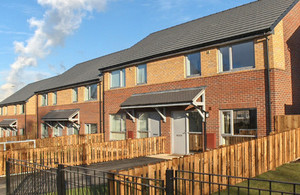Location
In terms of geography and the built environment, the term ‘location’ is used to refer to a point or area on the Earth’s surface. It is commonly used to imply more geometrical certainty than ‘place’ which tends to be used to indicate somewhere with a boundary that can be ambiguous. It also differs to ‘space’, which is more abstract and tends to be used to refer to a location without human value or meaning having been attached to it.
Location can be defined in a number of ways:
- Relative location: Described as displaced from another point, e.g. ’10 miles south of [place].’
- Locality: An area, usually highly populated, that has an ambiguous boundary, e.g. Greater London.
- Absolute location: Uses a Cartesian coordinate grid (e.g. the World Geodetic System) to plot latitudes and longitudes.
In terms of property development and real estate, the common mantra is ‘location, location, location’, which is used to emphasise the importance and centrality of location. This mantra refers to the fact that, typically, similar buildings (e.g. houses) can increase or decrease in value depending on their location, and that while structures can be improved, renovated, decorated, and so on, or its use class changed, its location cannot be changed.
However, in certain circumstances a structure can be moved from one place to another, in a process known as relocation. This can be done either by disassembling the structure and reassembling it in a new position, or by transporting it in its entirety. This is, though, a complex process and is often prohibitively expensive. For more information, see Structure relocation.
Some of the factors that can characterise a ‘prime location’ include:
- Good transport infrastructure links.
- Good quality schools, hospitals and other public services in the vicinity.
- Somewhere close to recreation sites and areas of natural beauty, green spaces, and so on.
- Properties that have good views.
- Close proximity to cultural, entertainment, shopping and leisure hubs.
- Economically-stable areas (those where properties have held their value over time).
- Low levels of crime, pollution and noise.
Some of the factors that can characterise a ‘bad location’ include:
- Close proximity to commercial, industrial or agricultural areas.
- Close proximity to railway tracks, busy roads or flight paths.
- High levels of crime, pollution and noise.
- Close proximity to an 'eyesore' such as a brownfield site.
- Noise or other pollution.
- Lack of natural light, ventilation, etc.
- Economically depressed or volatile areas.
- Areas with poor public services, transport links, job opportunities, and so on.
A location plan is a supporting document that may be required by a planning authority as part of a planning application. A location plan provides an illustration of a development in its surrounding context. This enables the planning authority to properly identify the land to which the application refers, and is typically based on an up-to-date Ordnance Survey (or similar) map.
[edit] Related articles on Designing Buildings Wiki
- Built environment.
- Compact sustainable city.
- Genius loci.
- Gentrification.
- Global positioning systems.
- Landscape urbanism.
- Location plan.
- Masterplanning.
- Neighbourhood planning.
- Nimbyism.
- Place.
- Property blight.
- Psychogeography.
- Public space.
- Region.
- Setting.
- Society.
- Space.
- Structure relocation.
- Town planning.
- Types of land.
- Urban decay.
- Urban design.
- View.
- Zeitgeist.
Featured articles and news
Professional practical experience for Architects in training
The long process to transform the nature of education and professional practical experience in the Architecture profession following recent reports.
A people-first approach to retrofit
Moving away from the destructive paradigm of fabric-first.
International Electrician Day, 10 June 2025
Celebrating the role of electrical engineers from André-Marie Amperè, today and for the future.
New guide for clients launched at Houses of Parliament
'There has never been a more important time for clients to step up and ...ask the right questions'
The impact of recycled slate tiles
Innovation across the decades.
EPC changes for existing buildings
Changes and their context as the new RdSAP methodology comes into use from 15 June.
Skills England publishes Sector skills needs assessments
Priority areas relating to the built environment highlighted and described in brief.
BSRIA HVAC Market Watch - May 2025 Edition
Heat Pump Market Outlook: Policy, Performance & Refrigerant Trends for 2025–2028.
Committing to EDI in construction with CIOB
Built Environment professional bodies deepen commitment to EDI with two new signatories: CIAT and CICES.
Government Grenfell progress report at a glance
Line by line recomendation overview, with links to more details.
An engaging and lively review of his professional life.
Sustainable heating for listed buildings
A problem that needs to be approached intelligently.
50th Golden anniversary ECA Edmundson apprentice award
Deadline for entries has been extended to Friday 27 June, so don't miss out!
CIAT at the London Festival of Architecture
Designing for Everyone: Breaking Barriers in Inclusive Architecture.
Mixed reactions to apprenticeship and skills reform 2025
A 'welcome shift' for some and a 'backwards step' for others.






















